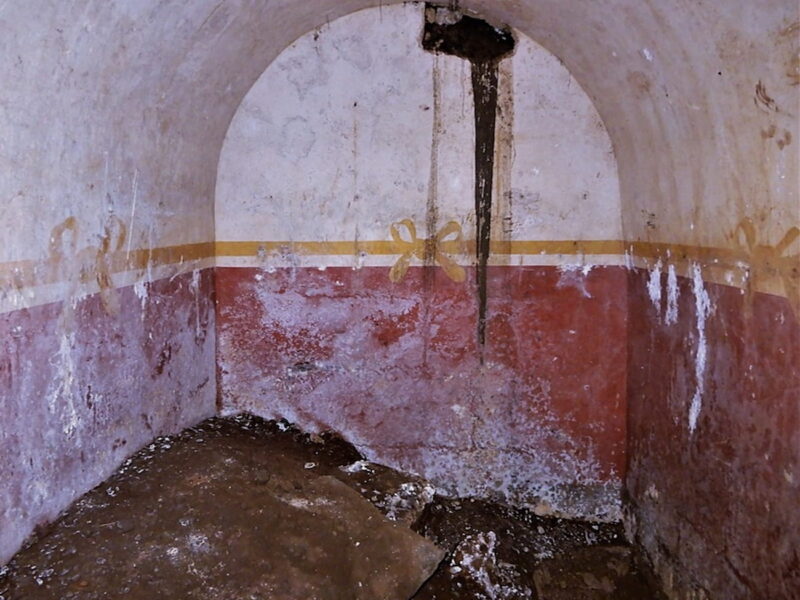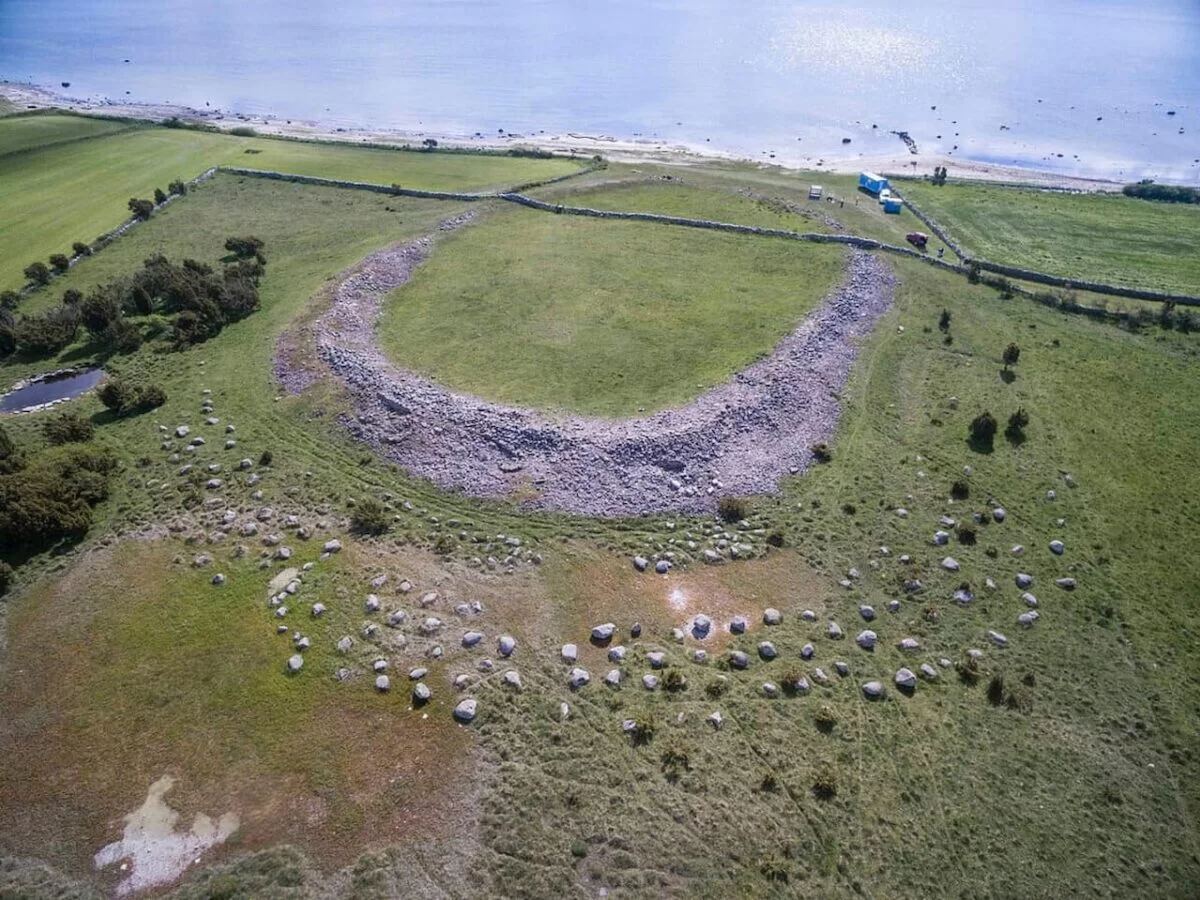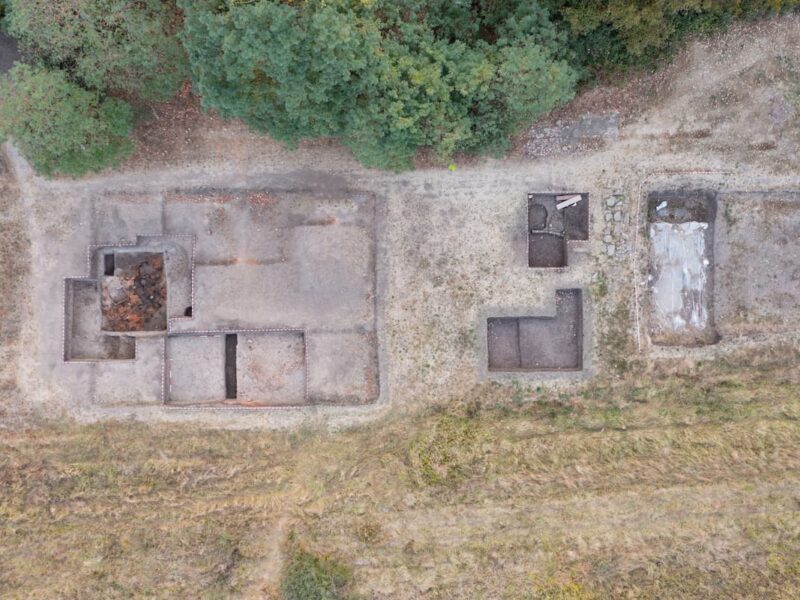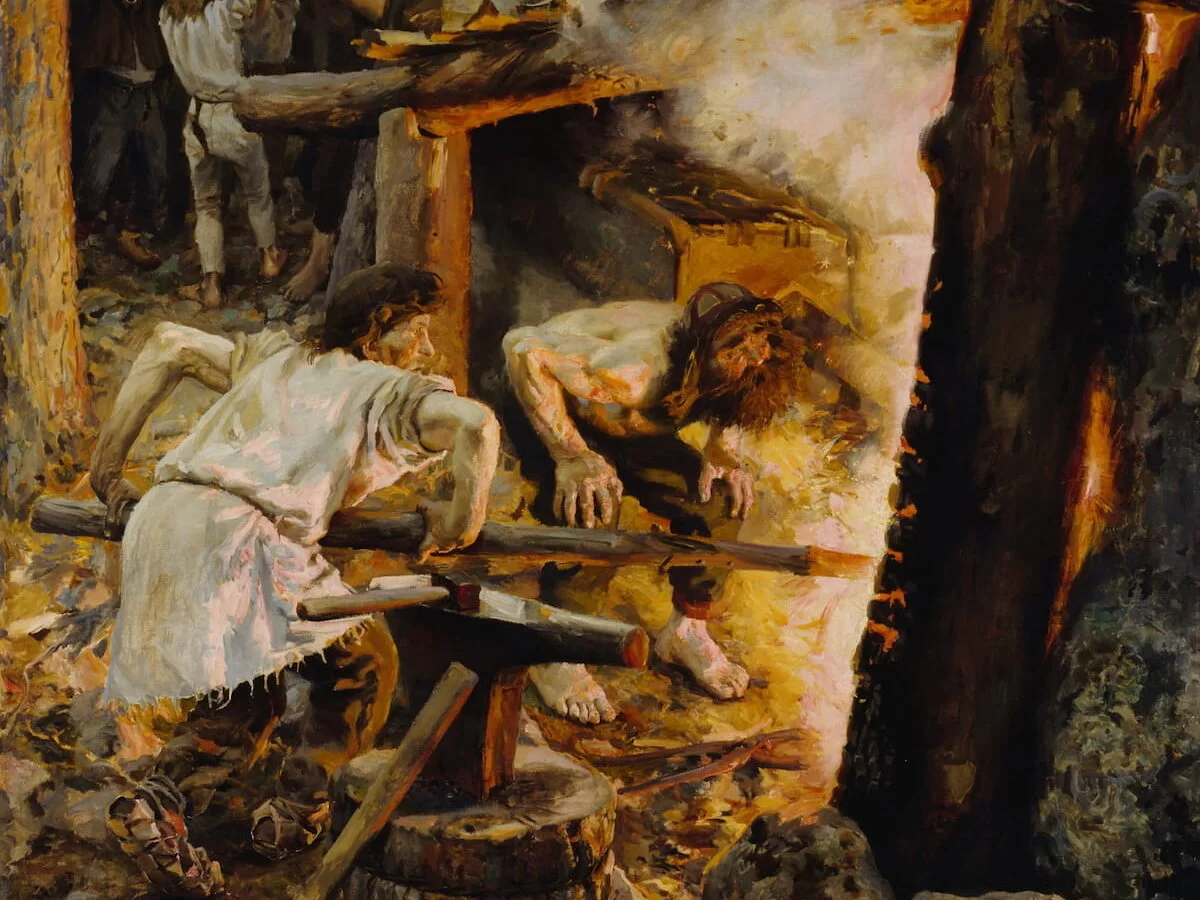A recent discovery in Tomb II at Vergina, Macedonia, Greece, has revealed what appears to be the sacred “chiton” or tunic of Alexander the Great, a finding that could change the historical understanding of artifacts associated with the famous conqueror.
A group of archaeologists, led by Antonis Bartsiokas from Democritus University of Thrace, identified a purple-dyed cotton textile that matches ancient descriptions of the sarapis, a ceremonial garment worn by the great Persian kings, which Alexander adopted after his victory over Darius III of Persia.
The material was discovered in the golden ossuary of Tomb II, alongside the remains of a male individual and a golden oak wreath. After exhaustive chemical, physical, and microscopic analysis, the researchers concluded that the fabric is made of cotton, a rarity for the time, and dyed with royal purple. Additionally, huntite, a bright white mineral used in ancient Persia, was found between the layers of the textile, reinforcing the idea that this garment has an eastern origin.

This discovery has major implications, as it could mean that many of the objects found in Tomb II actually belonged to Alexander the Great, rather than to Philip II, as was traditionally believed. Research suggests that Tomb II, located in the Great Tumulus of Vergina, does not house the remains of Philip II, Alexander’s father, but rather those of his half-brother, Philip III Arrhidaeus, who inherited several symbols of power from Alexander after his death.
Among the objects found in the tomb are a golden diadem, a scepter, and a golden oak wreath, all of which are mentioned in historical sources as part of Alexander’s royal regalia. However, the discovery of the sarapis is particularly important, as this garment had great symbolic significance in the Persian court.
The sarapis was a purple tunic with a white stripe down the center, reserved exclusively for Persian kings, and Alexander’s adoption of it marked his dominance over the vast Persian Empire.
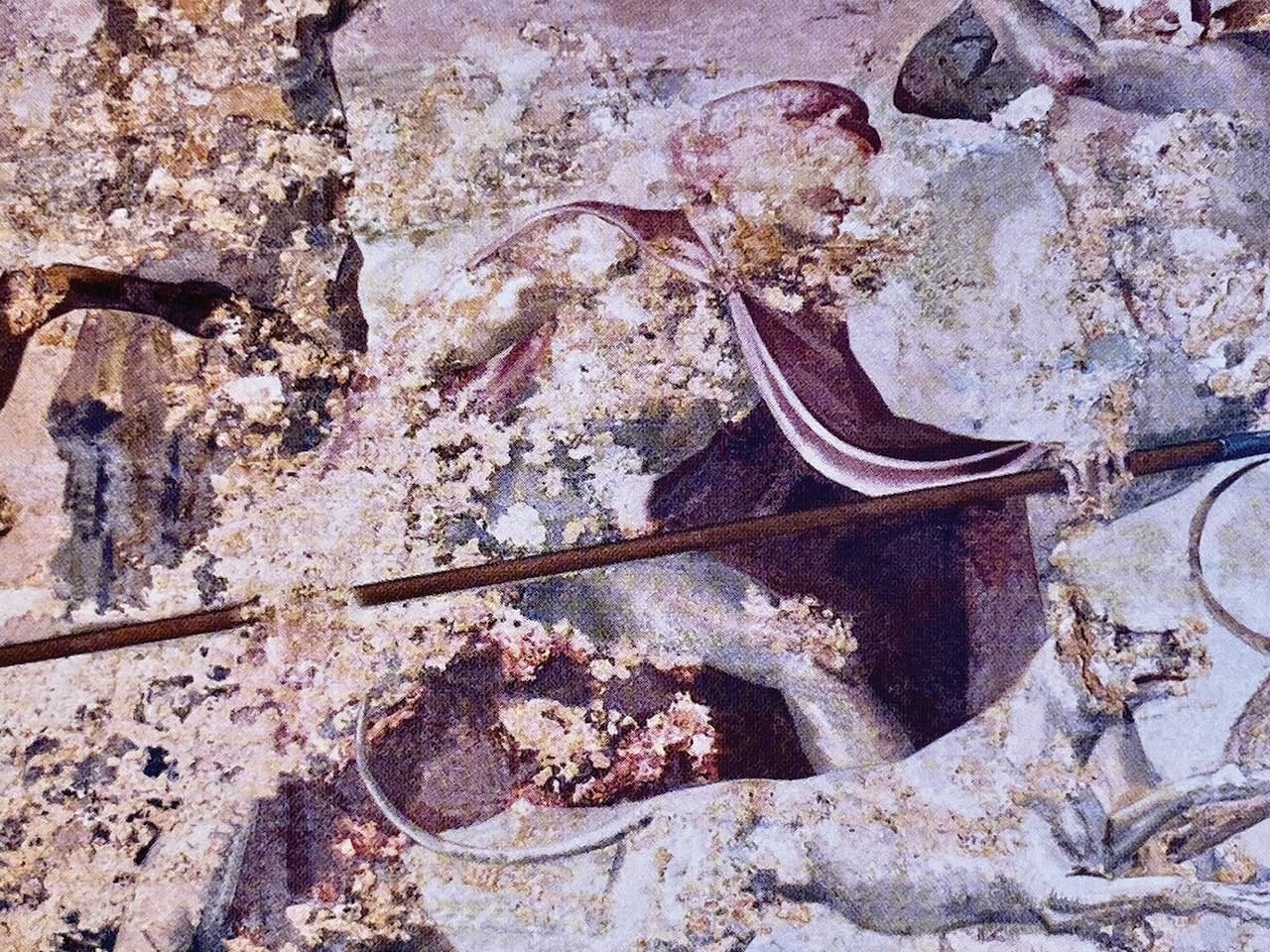
The studies conducted on the discovered textile were meticulous. The team used advanced techniques such as Fourier-transform infrared spectroscopy (FTIR) and gas chromatography-mass spectrometry to identify the components of the fabric. The results confirmed the presence of cotton and royal purple, as well as huntite, a material uncommon in Greece, which points to a clear Persian influence.
The use of huntite, which was highly valued for its dazzling whiteness, strengthens the theory that the sarapis found in Tomb II is the same one that Alexander the Great would have worn in official ceremonies. This type of textile would have been extremely expensive to produce, as the purple dye was extracted from murex snails, a process that required large quantities of these mollusks to dye a single piece of fabric.
For decades, archaeologists have debated the identity of the occupants of the royal tombs of Vergina. Tomb II was traditionally attributed to Philip II, but this new finding provides more evidence that it may belong to Philip III Arrhidaeus. The latter was Alexander the Great’s half-brother and assumed the throne after the conqueror’s death, though only nominally, as he lacked real power.
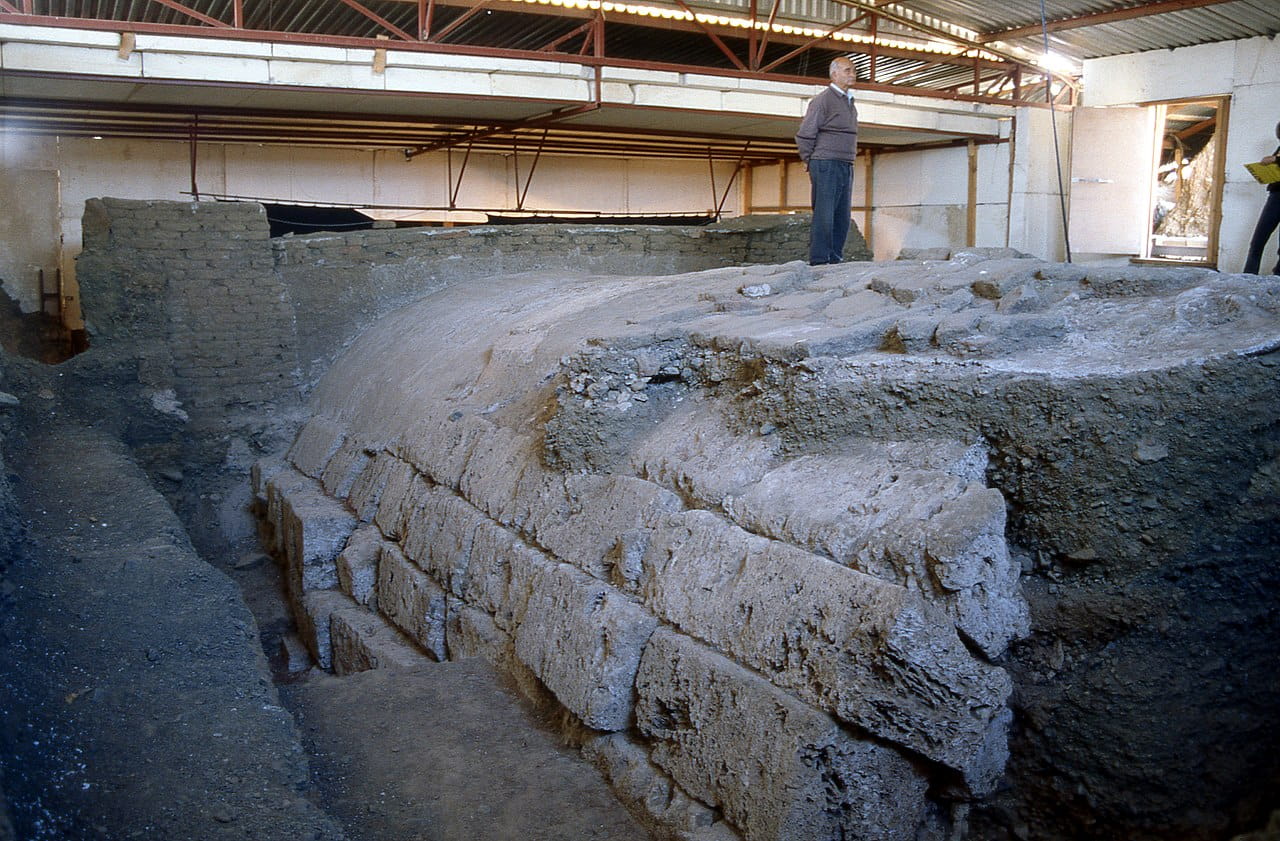
The discovery of Alexander’s sarapis in Tomb II is also supported by representations on the tomb’s frieze. In one of the hunting scenes, a hunter believed to be Alexander the Great is depicted wearing a purple tunic with white stripes, similar to the description of the sarapis found in historical sources. This visual representation further strengthens the connection between the objects found and Alexander himself.
The discovery of Alexander the Great’s sacred chiton not only adds another piece to the archaeological puzzle of Vergina but also offers a new perspective on Persian influence in the Macedonian court and on Alexander’s role as Pharaoh of Egypt, King of Greece, and Emperor of Persia.
The identification of this textile could spark new research on the role of royal clothing in Hellenistic and Persian cultures, as well as in the funerary customs of the time.
SOURCES
Bartsiokas, A. (2024). The Identification of the Sacred “Chiton” (Sarapis) of Pharaoh Alexander the Great in Tomb II at Vergina, Macedonia, Greece. Journal of Field Archaeology, 1–13. doi.org/10.1080/00934690.2024.2409503
Discover more from LBV Magazine English Edition
Subscribe to get the latest posts sent to your email.





